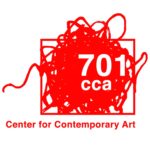SCAC Fellow lands residency in Columbia
701 Center for Contemporary Art announced Adrian Rhodes today as its new artist in residence.
 The 701 CCA Prize 2020 winner receives a six-week paid residency at 701 CCA. A solo exhibition following the residency will feature work created during it.
The 701 CCA Prize 2020 winner receives a six-week paid residency at 701 CCA. A solo exhibition following the residency will feature work created during it.
701 CCA in Columbia provides the time and place for conversations and reflection. The 701 CCA Prize is an art competition and exhibition for South Carolina artists 40 years old and younger. The project identifies and recognizes young professional South Carolina artists whose work is exemplary in its originality, shows awareness of artistic developments and is of high artistic merit.
Rhodes submitted to all four previous prize competitions. The printmaker and mixed media an installation artist holds both bachelor’s and master’s in fine arts from Winthrop University and has exhibited widely and often throughout the Carolinas and beyond. Recognitions of her career so far include being South Carolina Arts Commission visual arts fellow in 2020, selection for the 701 CCA South Carolina Biennial in 2019 and 2021, and the recent region-wide exhibition Coined In The South at the Mint Museum in Charlotte.
Artist statement

“My work is about relationships, and the complexity of closeness- the simultaneous struggle to separate from your past and return to it in the same breath.
As a medium based in the creation of multiples, printmaking becomes a method for creating structure. This framework, indulging a desire for order, creates space for disruption. Using prints as modular components allows the work to inherit visual information across pieces. I am interested in how this repetition of imagery and motif reflects recurring thought patterns.
Tedious handwork is an anxiety response, reflecting an obsessive desire for control, which is undone through woundings within the work. In a world of instant gratification, the act of sitting with heavy thoughts and repetitive processes for an extended time becomes a statement in itself, bringing that act to the content and context of the work.”

